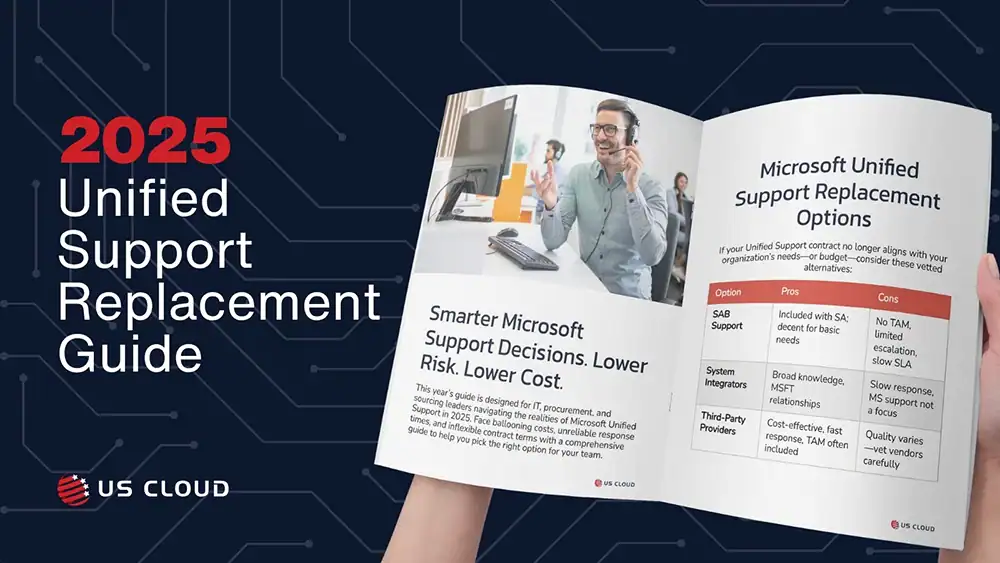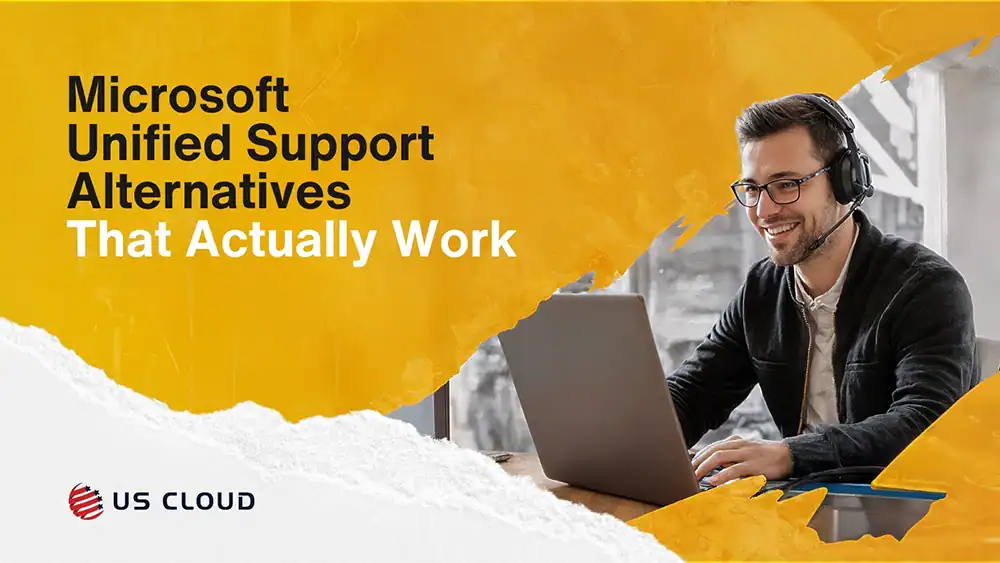
Enterprises Embracing Third-Party Software Support & Maintenance to Save Billions.

Enterprises Embrace 3rd Party Software Support to Save Billions
Enterprises are switching to third-party software support providers for lower costs and better service. Forrester® Research reports that enterprises are embracing third-party support and maintenance and will save over $5B thru 2027. Forrester goes on to say that 80% of CIOs already use OEM + at least one third-party party for their SAP, Oracle, IBM or Microsoft software support and maintenance.
Forrester has produced numerous influential studies that have consistently guided business decisions worldwide. One of their notable recent pieces of research centers on how decision-makers are increasingly embracing third-party software support and maintenance. This shift is shaping how companies strategize their IT investments, emphasizing cost efficiency, innovation, and business agility.

A New Trend in Software Support and Maintenance
Traditionally, enterprises depended on original equipment manufacturers (OEMs) for software support and maintenance. However, escalating costs and varying levels of support efficiency have left many organizations seeking alternatives. Forrester’s research reveals an emerging trend where businesses are turning to third-party support and maintenance (TPSM) providers as a reliable and cost-effective solution.
Some of these key findings include:
- Working with third-party support and maintenance (TPSMs) is growing in popularity. 79% of decision-makers report that their firms use a combination of TPSMs and OEMs, with a further 7% only using TPSMs.
- The high cost of OEM maintenance services cause problems for IT and procurement leaders, but they hesitate to switch to TPSMs for fear of losing out on OEM expertise, security updates, or license discounts.
- 98% of leaders expecting business and operational benefits of switching to a TPSM to outweigh the risks, with 80% of those currently using TPSMs saying they would recommend it to their peers.
Improving Agility and Cutting Technical Support Costs
The increase in firms adopting new working methods comes with a degree of volatility and uncertainty. Technology can step in to play a role in helping to keep everything competitive and cohesive, but it depends on where that technology comes from.
Taking this into account, CIOs and IT leaders are increasingly prioritizing agility as their top Enterprise IT goal. Nearly 80% of IT initiatives aim to improve their organization’s ability to react faster to ongoing shifts in business. 75% of decision-makers want to replace legacy applications and deliver IT projects faster.
Alongside agility comes a desire to reduce the cost of support. Roughly two-thirds of CIOs and IT leaders prioritize initiatives that help to reduce costs, manage external partners more efficiently, and reduce software maintenance costs.
Urgent Enterprise IT Priorities in Limbo
Despite the importance of urgent priorities, 93% of CIOs and IT leaders claim that at least one challenge prevents them from achieving or following through on these critical priorities. The most common obstacle for over half of these decision-makers is IT budget reallocation due to the economic climate, further exacerbating problems that many already face due to a lack of budget.
Difficulty ensuring security and inflexibility of existing applications also cause issues for Enterprise IT leaders, preventing them from achieving their most important priorities. This means that CIOs and IT leaders are stretched thin, attempting to optimize their enterprise’s technology budgets to free up resources while also focusing on their organizations’ near-term priorities.
The Rise of Third-Party Support Services
Forrester estimates that software maintenance and subscription spending takes up roughly 17% of organizations’ technology budgets, with some enterprises experiencing significant revenue changes due to post-pandemic economic shifts. These companies have had to cut upwards of 30% or more of their costs to stay afloat, something that TPSMs have helped with.
Changing over to a TPSM can be an effective stopgap to the costs of software maintenance. Using a TPSM as an OEM maintenance alternative is growing in popularity, with nearly 80% of decision-makers saying their firms are already working with both OEMs and TPSMs, with a further 7% reporting that they work exclusively with TPSMs. While 14% are only using OEMs for software maintenance currently, one-third of them are considering or already in the planning stages of switching to a TPSM.
Why Consider Switching from OEM to Third-Party Support
The consideration to switch to a third-party support provider is slowed due to the common fear of losing access to OEM expertise, crucial security updates, or missing out on discounts or bundled software licenses. While all of these elements are highly impactful to an enterprise’s bottom line, OEM fees take up the majority of IT budgets. 89% of decision-makers whose companies work with OEMs experience software maintenance challenges from an OEM, mainly around costs. Add in high upgrade costs with complex pricing models and you have a recipe for IT budget cuts.
Inflexible contracts present additional challenges for sourcing, vendor management and technology leaders, leading to a search for software vendor support that provides the same or better solutions than OEM without the high fees and backend hassle. This search inevitably leads to TPSM providers.
Enterprise Challenges and Risk Mitigation of Switching
Despite these benefits, CIOs face several challenges when implementing third-party support. These include contract negotiations, transitioning from OEMs to TPSMs, maintaining compliance, and managing multiple vendors.
To address these challenges, Forrester recommends the following strategies:
- Robust Vendor Selection: Undertake a rigorous vetting process to choose a reliable TPSM with a proven track record. Check references, ensure they have a robust support infrastructure, and that they can meet your specific needs.
- Contract Management: Thoroughly scrutinize support contracts to avoid hidden costs and ensure the agreement offers the necessary coverage.
- Compliance Assurance: Ensure the TPSM has the necessary certifications and complies with regulatory standards relevant to your industry.
- Vendor Management: Utilize vendor management software or a vendor management team to oversee multiple vendors effectively.
Proving Third-Party Support Provider Value
TPSMs must demonstrate their value and capabilities upfront to IT sourcing, procurement and vendor management teams. Only 20% of CIOs are currently using OEMs exclusively. The balance are already using a mix of OEM and third-party software support and maintenance providers across various industries and software vendors. Forrester recommends seeking enterprise referrals in your industry and size as well as a Proof of Concept (POC) to validate cost savings and capabilities.
Convincing stakeholders to switch from OEM to third-party requires an investment in reassurance. IT and procurement leadership teams are looking for TPSMs that can help with software upgrades, meet security requirements, and provide fixes. Other important factors under consideration are simpler pricing models, flexible contracts, better service, and maintenance costs outweighing reinstatement costs of future upgrades.
This means that when assessing a change in a software maintenance vendor, decision-makers should be evaluating the cost and the provider’s ability to meet their enterprise’s unique software support and maintenance needs. While cost-cutting may be the primary driver, the ability to to deliver a service equal to or better than the OEM is equally important.
Benefits of Third-Party Support and Maintenance
- Cost Savings: One of the most attractive aspects of third-party support is the significant cost savings. OEM and ISV maintenance contracts often include unnecessary services, while TPSM providers offer a more tailored approach that can save enterprises up to 60% on support costs.
- Enhanced Service: TPSM providers typically provide more personalized service compared to OEMs. Their smaller client base allows them to devote more attention to each client and address their specific needs more effectively.
- Extended Life for IT Assets: TPSMs are often more willing to support older equipment that OEMs have declared ‘end of life.’ This service enables enterprises to extend the lifespan of their IT assets, promoting a higher return on investment (ROI).
- Greater Flexibility: With TPSMs, organizations have the flexibility to choose support for specific equipment or software, rather than being tied to a blanket contract. This option gives companies more control over their support expenditure and strategic direction.
The Value TPSMs Provide - Less Cost, Better Service
Many enterprises have already made the switch to TPSMs for their Oracle, SAP, IBM, Salesforce or Microsoft software maintenance needs not only for the benefits, but the services and value offered. The vast majority of organizations working with TPSMs show that they are satisfied with their service. Most agree that TPSM providers offer good service and consider TPSM services an excellent value for the money invested. Nearly three quarters of IT leaders report that they use TPSM services frequently.
Even with those working with TPSMs and OEMs at the same time, 3x more CIOs prefer working with the TPSM over the OEM. Not only do many IT leaders prefer TPSMS, but 80% of them give a rating of 7 or higher on a scale of 0 to 10. TPSM usage is gaining momentum, with benefits and proof of value increasing as more companies switch over, giving proof that TPSMs are worth the leap.
80% of CIOs Use OEM + Third-Party
As per Forrester’s research, organizations across industries are increasingly recognizing the benefits of third-party software support and maintenance. This trend is particularly apparent among enterprises with significant IT budgets, where savings from TPM can be redirected towards innovation and growth initiatives.
The shift towards third-party support and maintenance signals a changing paradigm in IT management. Organizations can capitalize on this trend to maximize their IT investments, bolster service quality, and promote business agility. However, a robust implementation strategy is crucial to navigate potential challenges and reap the full benefits of third-party support.
As the digital landscape evolves, the need for cost-efficient and high-quality IT support continues to grow. Forrester’s research provides valuable insights into how enterprises can leverage third-party support to navigate this evolving landscape. By strategically partnering with TPSM providers, organizations can enhance their IT infrastructure’s effectiveness and align it more closely with their business objectives.
As Forrester’s research continues to reveal, the era of third-party IT support is here. With careful planning, strong vendor relationships, and keen strategic vision, decision-makers can lead their organizations into a new age of efficiency, innovation, and profitability.



